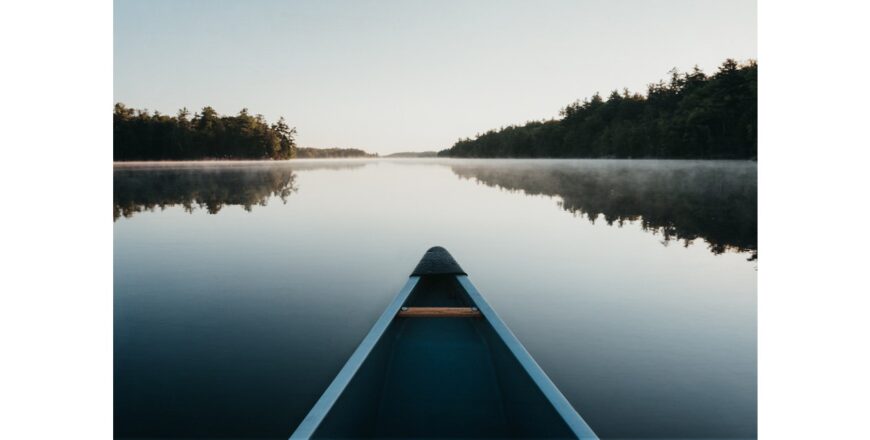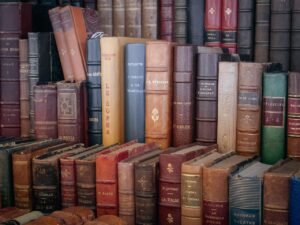Research in the US Northwest
- Description
- Curriculum
Tucked in the northwestern corner of the US, the Oregon Territory, organized in 1848, included present-day Washington, Oregon, Idaho, and part of western Montana and Wyoming. This course will guide students through the history and research of each state, repositories, records, and methodologies. Early migration trails to the region were many. Learn why and how settlers made the arduous and dangerous overland journey. Resources like diaries, wagon train rosters, emigrant guides, and where to find them are covered. US government land laws like the Donation Land Act, the Homestead Act of 1862, and others influenced when and where settlers moved and lived. Employment opportunities also played a role in the region’s development and are covered. Women played an immense role in the settlement of the Northwest and will be covered throughout the course. Native Americans and other ethnic groups are also discussed. Students will develop a personal research guide based on a family or geographical area of interest. They will be able to share a project and receive feedback and suggestions. By the end of this course, students will have a comprehensive understanding of genealogical research in the Northwestern US and be equipped with the tools and knowledge to uncover their family history in this region.
Week 1, February 18
Settling the Great Northwest, Part 1: From the Flood to the Territories, 10:30-11:45
Instructor: Geri Cochran Auerbach, MS, AG
Discover the unique geography that helped shape the land that was inhabited by different people and nations and that eventually became the Oregon Country. This session will examine the inhabitants of the Northwest prior to the arrival of Europeans and the various treaties, cessions, and land purchases that altered the control and borders of the US Northwest, culminating in the final territorial map of 1869.
Settling the Great Northwest, Part 2: The Arrival of Trappers, Missionaries, and Homesteaders, 12:15-1:30
Instructor: Michelle Roos Goodrum, CG
This session discusses the Europeans who initially peopled the US Northwest, including the early fur trappers, missionaries, “foreign” persons, and homesteaders. The final process to statehood for each of the remaining four states (Montana, Washington, Idaho, and Wyoming) will be explored. This session will also discuss the religious organizations (Methodist, Catholic, and Quaker) that were vital in the area’s early history.
Week 2, February25
Western Overland Trails: Following the Seven T’s, 10:30-11:45
Instructor: Steven W. Morrison, MPA
The major trails from the Midwest to the West will be covered in this session. The principal routes will include the Oregon and California Trails, the Mormon migration, the Santa Fe Trail, and more. These were the overland rivers which helped populate the West. Explore migrations records indexed by the Oregon-California Trails Association (OCTA), and those historical accounts from the Pioneer Database in Salt Lake City. So, saddle up, we are burning daylight.
Already Here: Native Americans in the Northwest, 12:15-1:30
Instructor: Janice Lovelace, PhD
Indigenous people have lived in North America for thousands of years before Europeans arrived. Dozens of tribes were in the Northwest in the early 1800s following the 1803 Louisiana Purchase and the 1804-1806 Lewis and Clark expedition. What tribes were here, and where did they live prior to mid-1800s treaties? What federal, state, and tribal records can genealogists find?
Week 3, March 4
Discovering Northwest Frontier Settlers: Unearthing Northwest Ancestry through Federal Land Records, 10:30-11:45
Instructor: Michelle Roos Goodrum, CG
In 1850, Congress passed the Oregon Donation Land Act to encourage settlement in the West. Homestead Act followed in 1862. Do you know about the Timber Culture Act, the Desert Land Act, and other laws passed to entice settlers? In this session, we will learn about those opportunities to obtain land and the record trail that settlers and the government created. Federal land records can show relationships among your ancestors and their neighbors and add depth to your family’s story.
Developing Research Reference Guides for the Northwest States, 12:15-1:30
Instructor: Geri Cochran Auerbach, MS, AG
Collecting and organizing information about your location of interest is a crucial first step in genealogical research. It is important to know the geography and history of an area, what types of records were created there, and the availability of these records. This session will focus on developing your own research reference guides in the Northwest States. This is particularly useful for those who plan to obtain the ICAPGEN US Northwest accreditation.
Week 4, March 11
Census Records in the US Northwest, 10:30-11:45
Instructor: Geri Cochran Auerbach, MS, AG
This session will examine the variety of census records available in the Northwest, starting with Slacum’s Report on Oregon 1836-1837. We will examine the purposes of the various censuses and their availability and record locations. Territorial, state, and county censuses through 1900 will be discussed.
Repositories of the Northwest States, 12:15-1:30
Instructor: Carol Jenner, PhD, CG
Could store ledgers confirm your ancestor’s residence in 1890? How might a National Park personnel list aid your search? This class will explore the genealogically relevant research collections of Idaho, Montana, Oregon, Washington, and Wyoming, including significant National Archives and Records Administration holdings. Sources for traditional items, including census, church, court, land, newspaper, probate, and vital, will be visited along with selected gems in specialized collections
Week 5, March 18
Researching History Through Northwest Newspapers: A Practical Guide, 10:30-11:45
Instructor: Gena Philibert-Ortega, MA, MAR
Newspaper research is a must for uncovering facts and the historical context of our ancestors’ lives. This lecture will equip you with the knowledge and skills to navigate digitized newspaper websites, digital collections, local libraries, and historical societies to uncover the stories hidden within these primary sources. We will discuss where newspapers can be found and best practices for advanced newspaper research.
Hidden Depths: Researching in Regional Archives and Special Collections – Seattle, 12:15-1:30
Instructor: Lisa Oberg, M Libr
Seattle is home to a number of repositories important for researching Pacific Northwest history. Venturing beyond vital records, the records found in these repositories help put individuals in context with the times in which they lived. To use these collections effectively you need to view ancestors through a different lens, beyond names and dates, and consider their occupations, migration paths, religion, ethnic origins, and more. This lecture will focus on using Special Collections at the University of Washington and the Seattle Branch of the National Archives and Records Center effectively. Attendees will learn terminology associated with accessing archival collections, how to navigate finding aids and collection guides, and how to use archival collections effectively to support your research.
Don’t Let Stumptown Stump You! Portland and Multnomah County Records, 12:15-1:30
Instructor: Keri Logan, MLS
The City of Portland formed the nexus around which the smallest but most populous county—Multnomah—was formed. Starting at just over two square miles carved from the forest, rapid expansion fueled by gold rushes, so-called free land, and a developing port drew settlers who quickly developed marketplaces, religious institutes, lodges, schools, and other aspects of urbanization. From early newspapers to poor farm records, we will explore some of the excellent record sets generated by this burgeoning metropolis.
Week 6, March 25
Living Off the Land: The Natural Resources Occupations that Drove Northwest Settlement, 10:30-11:45
Instructor: Geri Cochran Auerbach, MS, AG
Trappers were some of the earliest non-native peoples in the Oregon Country. As the Oregon Trail developed and “free land” became available in the territories, farmers and others flocked to the region. Much of the available land was not suitable for farming so ranching and sheepherding also became important occupations. This session will discuss the evolution of each of these activities, their conflicts with one another, and where their unique record sets may be found.
The Nordic Passage: Scandinavian Migration Patterns to the Northwest, 12:15-1:30
Instructor: Jill Morelli, CG, CGL
Embark on a riveting journey of your Scandinavian ancestors. Uncover the forces driving millions from Scandinavia to seek new beginnings in the Northwest in the 1800s, shaping the region’s economic and cultural landscape. From the hardships that spurred their migration to the thriving communities they built, delve into stories of resilience and transformation. Join us for a compelling exploration of the dreams, struggles, and enduring legacy of Scandinavian settlers in the American Northwest.
Week 7, April 1
Mining, Logging and Fishing: Early Work in the Northwest, 10:30-11:45
Instructor: Janice Lovelace, PhD
Natural resources were abundant in 19th century when Europeans, Asians, and Africans migrated to the Northwest. Learn more about the work in minCaes, forests, and waters of the Northwest and how your ancestors were involved in the late 19th and early 20th centuries.
African Americans Come to the Northwest: 1870-1940, 12:15-1:30
Instructor: Janice Lovelace, PhD
Following the end of the Civil War, nearly four million African Americans were emancipated and started to move out of the South to Northern and Western states. What jobs attracted African Americans to the Pacific Northwest? Where can we find records?
Jewish Genealogical Reseach in the Northwest United States, 12:15-1:30
Instructor: Janice M. Sellers
This class provides an overview of the records and resources available for researching Jewish genealogy in the Northwest states, including archives, libraries, genealogical and historical societies, other groups, and online sites.
Week 8, April 8
Industries as a Migration “Pull” in the Northwest States, 10:30-11:45
Instructor: Carol Jenner, PhD, CG
Generations of in-migrants, both domestic and foreign, were drawn to the Northwest states by employment opportunities in railroad construction and operation, shipbuilding and maritime work, aircraft manufacturing, and federal works projects. This class will cover industrial history and the related records generated by employees as they migrated to and moved within the region. Industrial development frequently involved interaction with tribal communities, and the associated displacement of those communities will also be discussed.
The Chinese Exclusion Act in the US Northwest, 12:15-1:30
Instructor: Trish Hackett Nicola, CG Emiritus
The Chinese Exclusion Act was in effect from 1882 to 1943. After it was repealed only 105 Chinese were allowed into the US until 1965. It was the first law to discriminate against a specific race entering our country. The Act had profound long-term effects on generations of Chinese. Although it is unfortunate how these files came about, the biographical information, documents, and photos they provide are priceless.
Japanese Migration to the US Northwest, 12:15-1:30
Instructor: Linda Harms Okazaki, MA
Although there was some Japanese emigration in the 1860s, most Japanese migration to the Americas began after the implementation of the Chinese Exclusion Act (1882). This lecture covers some of the historical reasons for migration, the points of entry, laws, and events which impacted the Japanese immigrants and their descendants, their occupations, and their social and religious experiences. An overview of both conventional and ethnic-specific records will be reviewed from the late 19th century through the post-World War II period.
Week 9, April 15
Exploring Her Story: Women in the Northwest, 10:30-11:45
Instructors: Geri Cochran Auerbach, MS, AG and Michelle Roos Goodrum, CG
Dive into the past and uncover the stories of women who shaped the Northwestern US. This session will introduce you to the historical context and unique records to uncover your female ancestor’s role in the settlement and development of this diverse region. Learn about the area’s early settlement, indigenous populations, suffrage, legal and property rights, education, employment, and other unique records related to women. We will illustrate successful research into female settlers with real-life examples.
My Northwest Family: Student Sharing, 12:15-1:30
Instructors: Geri Cochran Auerbach, MA, AG; Michelle Roos Goodrum, CG; and Steven W. Morrison, MPA
This Zoom break-out session will provide students with an opportunity to briefly share what they’ve discovered about a Northwest family over the course. Coordinators and classmates will provide suggestions about possible next steps that students could take in their research.
Week 10, April 22
Pioneers in Motion: A Family’s Westward Migration, 10:30-11:45
Instructor: Michelle Roos Goodrum, CG
Meet the Ballenger family whose journey west through Wyoming before they put down final roots in Montana and Washington. What were their motivations for moving? What stories and records did they leave? We’ll investigate various sources, to uncover the stories that shaped their lives in the Northwest.
A Babe on the Trail: Documenting the Female Descendants of an Infant Pioneer of 1843, 12:15-1:30
Instructor: Geri Cochran Aurebach, MS, AG
Margaret Gilmore Swick traveled as a newborn on the first large wagon train on the Oregon Trail in 1843. Follow the lives of Margaret and her female descendants as they made their way through Oregon and Southwest Washington. A variety of record types document and illustrate the lives of these women.

Class held 18 February-22 April, Wednesdays, 10:00am-2:00pm Mountain Time.
Coordinators:
Geri Cochran Auerbach, MS, AG
Michelle Roos Goodrum, CG
Steven W. Morrison, MPA
Faculty:
Carol Jenner, PhD, CG
Keri Logan, MLS
Janice Lovelace, PhD
Jill Morelli, CG, CGL
Trish Hackett Nicola, CG Emeritus
Lisa Oberg, M Libr
Linda Harms Okazaki, MA
Gena Philibert-Ortega, MA, MAR
Janice M. Sellers






